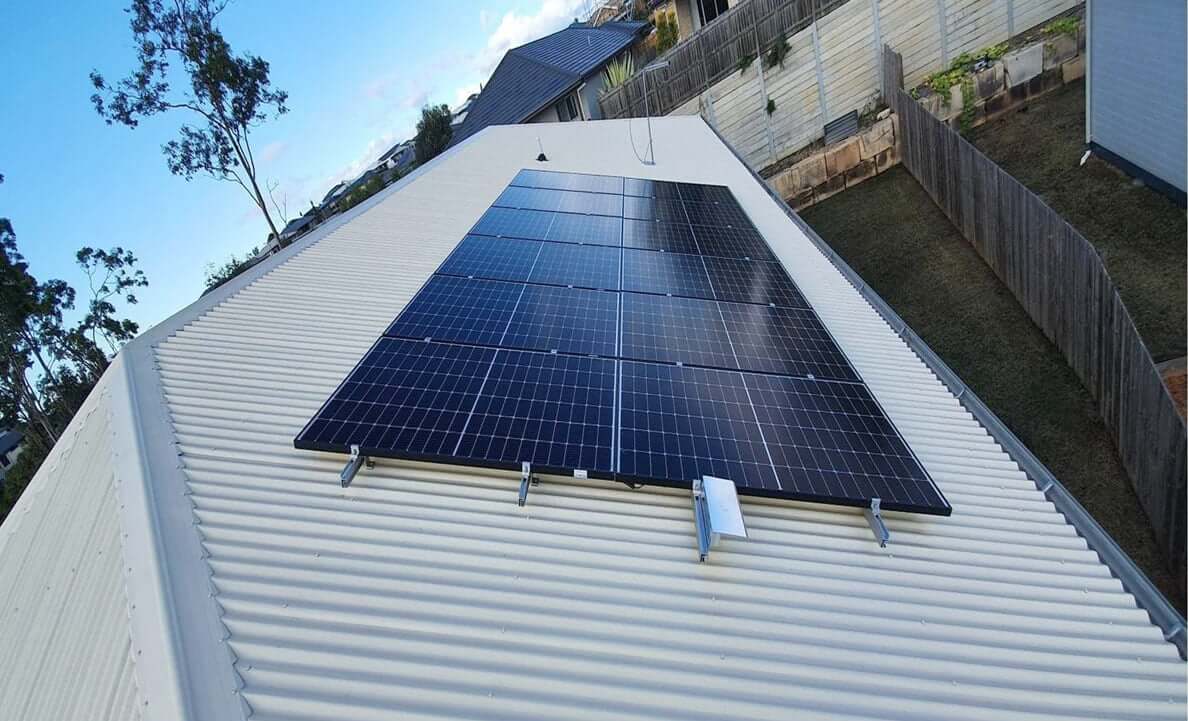Home Should I Oversize My Solar Panel System?
Should I Oversize My Solar Panel System?
Choosing to go for a bigger solar system primarily involves adding extra panels more than what you presently need to create excess electricity. However, what’s the reasoning behind this strategy?
When you install the “correct size” solar system (without a battery) you can essentially save about 90% off your power bill. Oversizing the system by adding more panels can mean you will save 100% of your current power bill. It also protects you against future panel efficiency degradation.
It’s all about the feed-in tariff. Because you sell excess power to your utility provider through the day and they sell it back to you at night, there is a difference in price where they make a small profit. This is why most still have small bills. Oversizing your system is a way around this.

Table of Contents
ToggleAdvantages Of Oversizing Your Solar Panel System
1. Larger government rebate
If you live in Australia, you can enjoy solar rebates when you purchase solar panels for the first time. The higher the capacity of the solar panels you purchase, the higher the amount of rebate you can enjoy.
By oversizing your solar panel system and buying more solar panels, so you are getting a larger rebate. You can only get a rebate once, so you might as well future-proof your power needs just in case you add additional appliances or install a pool, extension, etc.
2. Reduce your power bill by 100%
A big advantage of oversizing your solar system is the potential to have a $0.00 power bill. Normally when homeowners get solar installed, they aim for a 90% reduction. This is because there is a bunch of excess power you feed to the grid through the day and draw on at night. There is a small amount of cost involved in this.
By sending more to the grid through the day than you use at night will offset the costs involved and give you anear zero power bill each month.
3. Solar Panel Efficiency
Solar panels’ production efficiency will vary depending on your home’s location, roof angle, shading, and time of day. Solar panels do not always produce at rated capacity. Oversizing your solar panel system may help improve your solar panels’ production efficiency.
As the day progresses, the sun’s temperatures rise and fall. It impacts the production of electricity by your solar panels.
At noon, when the sun is shining directly on the solar panels, they produce more electricity. With an oversized solar panel system, you can produce more power at this time than when you use a normal-sized solar panel system.
4. Future proof solar panel efficiency degradation
As new solar panels age, the efficiency starts to drop off. Over a 25-year period this could see panels dropping to 85% efficiency. By having a larger array of panels you will protect yourself against this as even a 10% drop off will only have you coming back to your original energy use power size, so no biggie.
Disadvantages Of Oversizing Your Solar Panel System
1. Potential Energy Loss
An inverter should be the same capacity as your solar panel array. When you oversize your solar panel system and you live in a location with sufficient sunshine to ensure maximum production, you are likely to lose some power.
By using a lower-capacity inverter, the excess power according to the inverter capacity is clipped. Consequently, the amount of power produced by your solar panels in optimum conditions is not fully used up to power the home.
How To Oversize Solar Panel System
Oversizing your solar panel system is a simple process. It involves installing a larger capacity solar panel array than the inverter in the system.
For example, if you install a 4kW capacity solar panel array, you will oversize your system by installing a 3kW inverter.
Since your solar panels never operate at full efficiency due to natural factors, your lower-rated inverter ensures that you get maximum power generated from the solar panels.
If you live in a moderately hot region you can oversize your solar panels by 10%-20%. In a much hotter region, oversize your solar panel array by up to 30%.
FAQ's
Solar panels do not work at maximum capacity. Depending on where you are, your solar panels may have more productions problems. To make sure the panels produce at maximum capacity, first, make sure they are well installed. Purchase and have your solar panels installed by an accredited installer.
Make sure that you keep your solar panels clean. Wipe them as regularly as possible. Additionally, make sure that no trees are shading your solar panels. Also, regularly monitoring the output of your panels ensures that you can monitor and improve the output of your panels.
You can upgrade your solar system easily. One way to upgrade your solar system is by increasing the number of solar panels in your system. It increases the amount of electricity that can be produced by your system.
You can also upgrade your inverter. It involves purchasing a larger capacity inverter for your solar panel system. A larger inverter on your system means you can get more electricity in your house.
Depending on the brand of solar panels you install, you can expect your solar panels to serve you for about 20-30 years. If your solar panels are older than 20 years, you will not need to upgrade them. If their efficiency is lower than 80% replace your solar panels with new ones.
Replace your solar panels if they are not suitable for the sunshine in your region. Purchase and install solar panels that are suitable for your region. If you have fewer sunshine hours in your region, get solar panels that will produce more power for the available sunshine.

Compare Solar Panel Quotes
Table of Contents
Toggle









